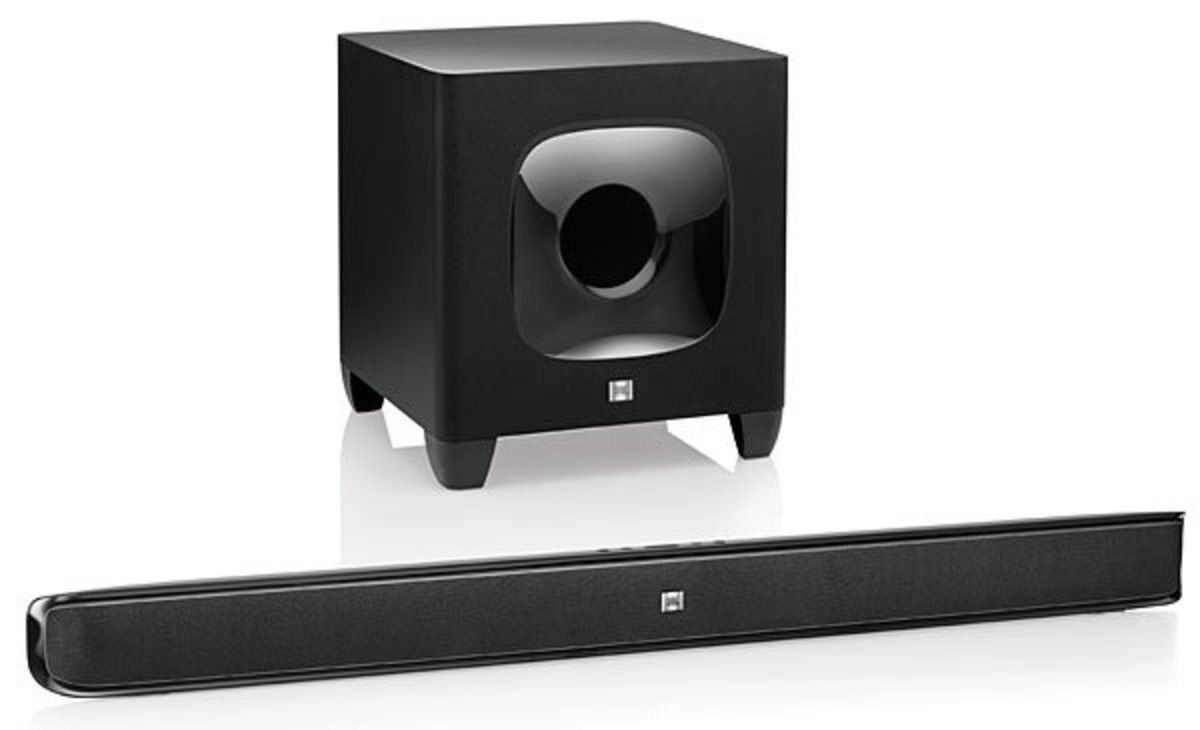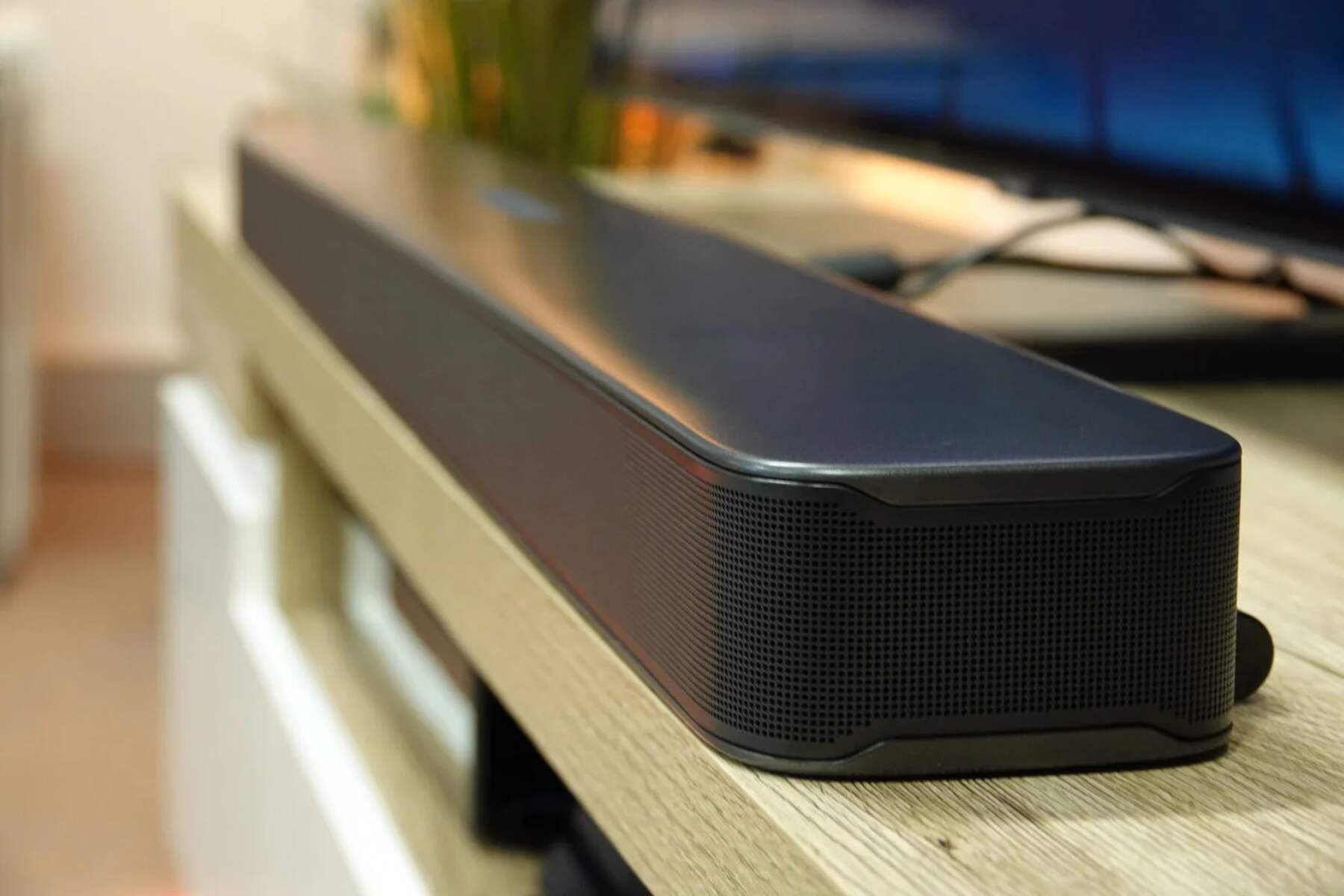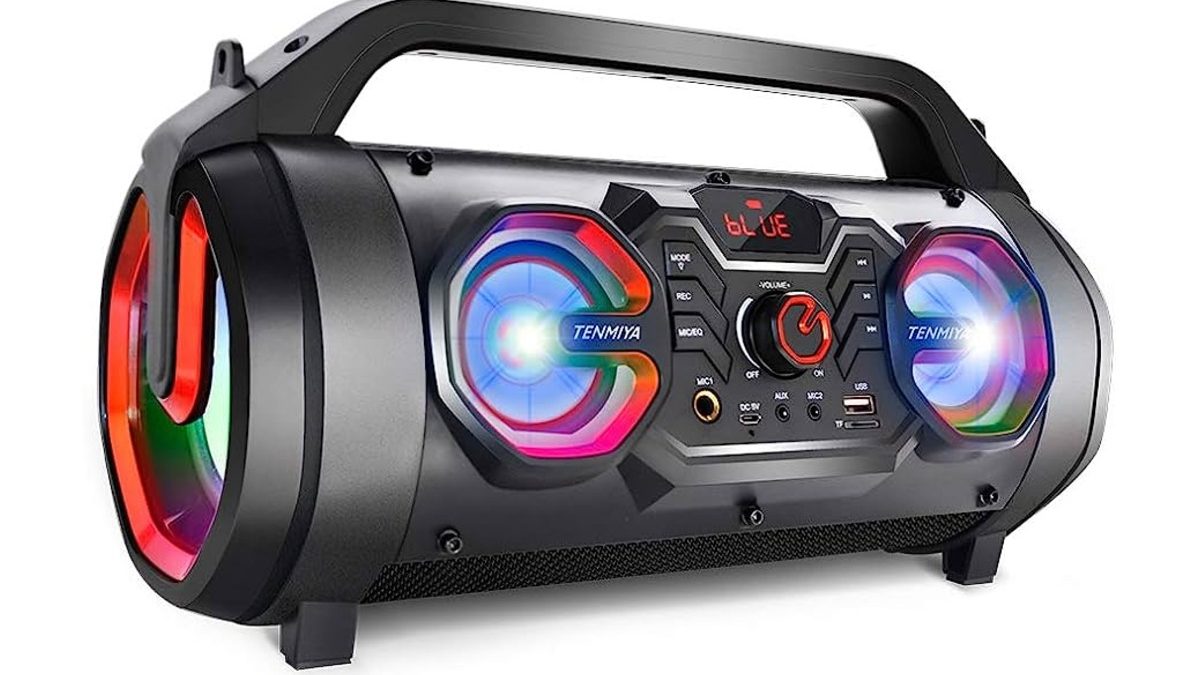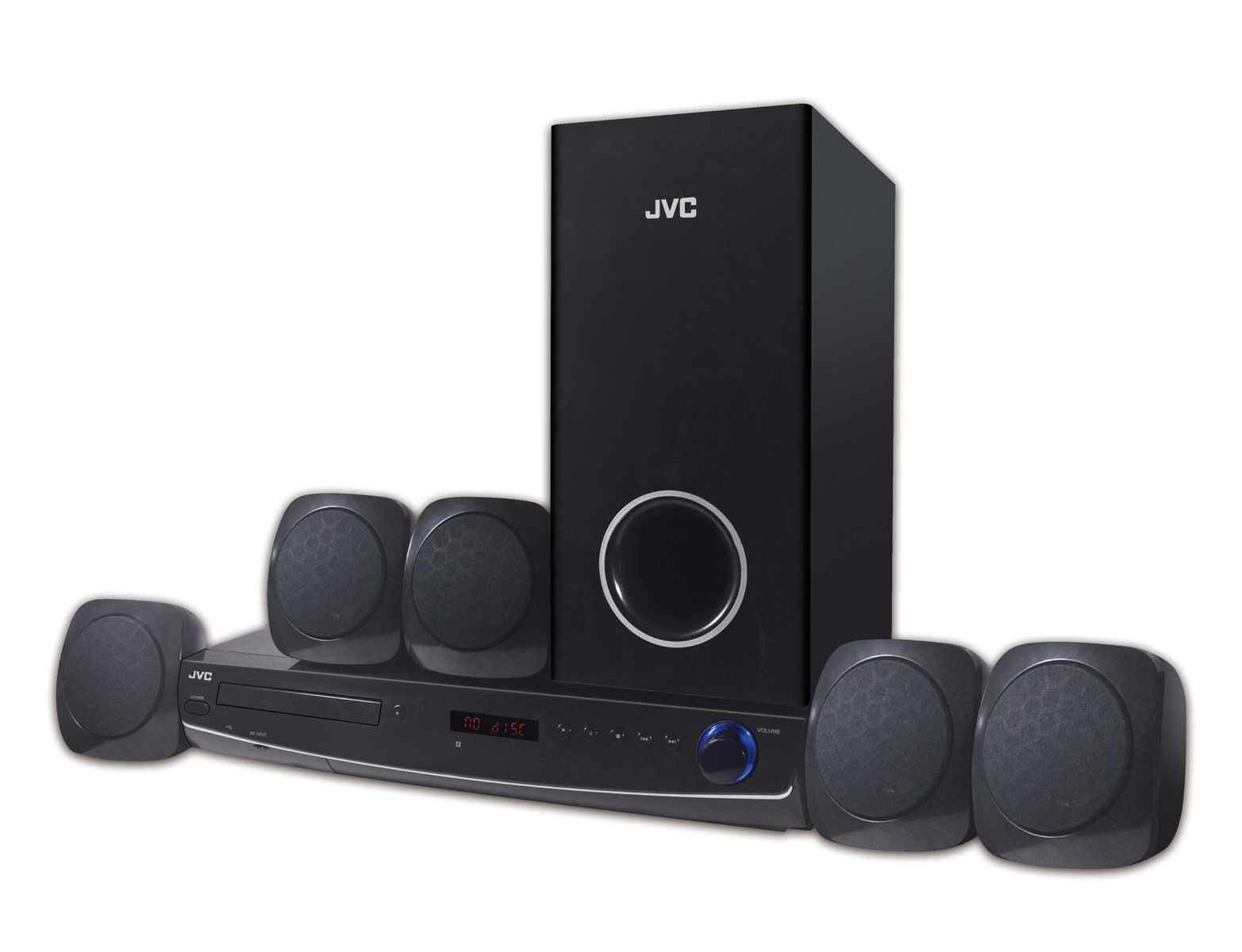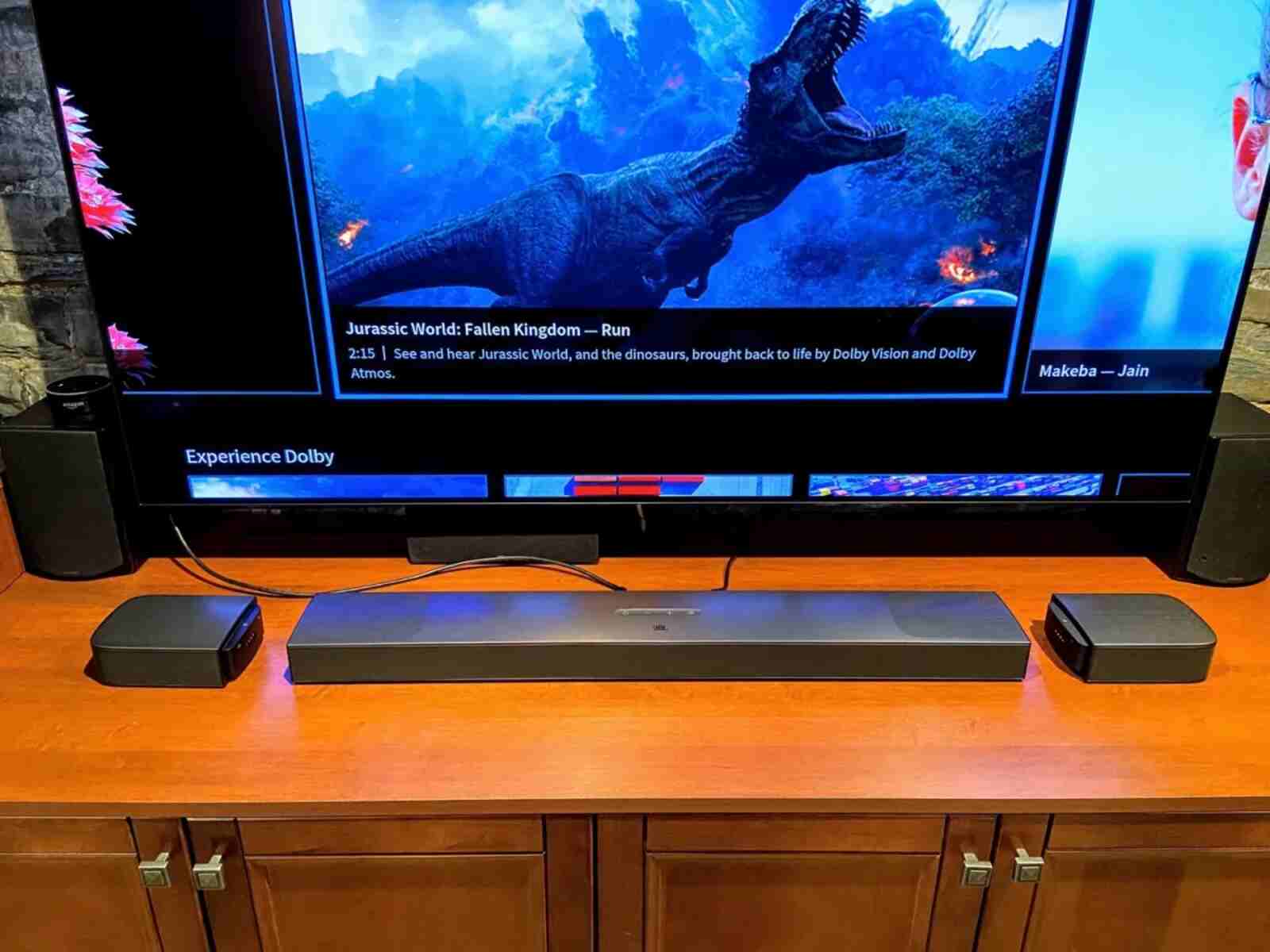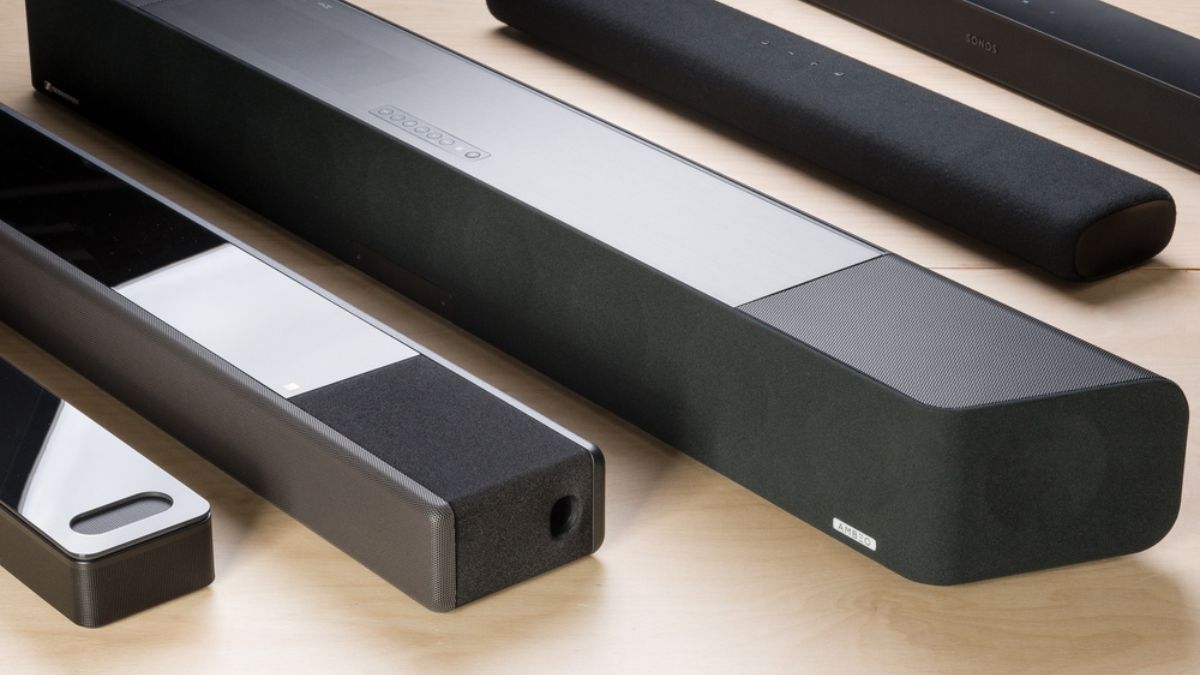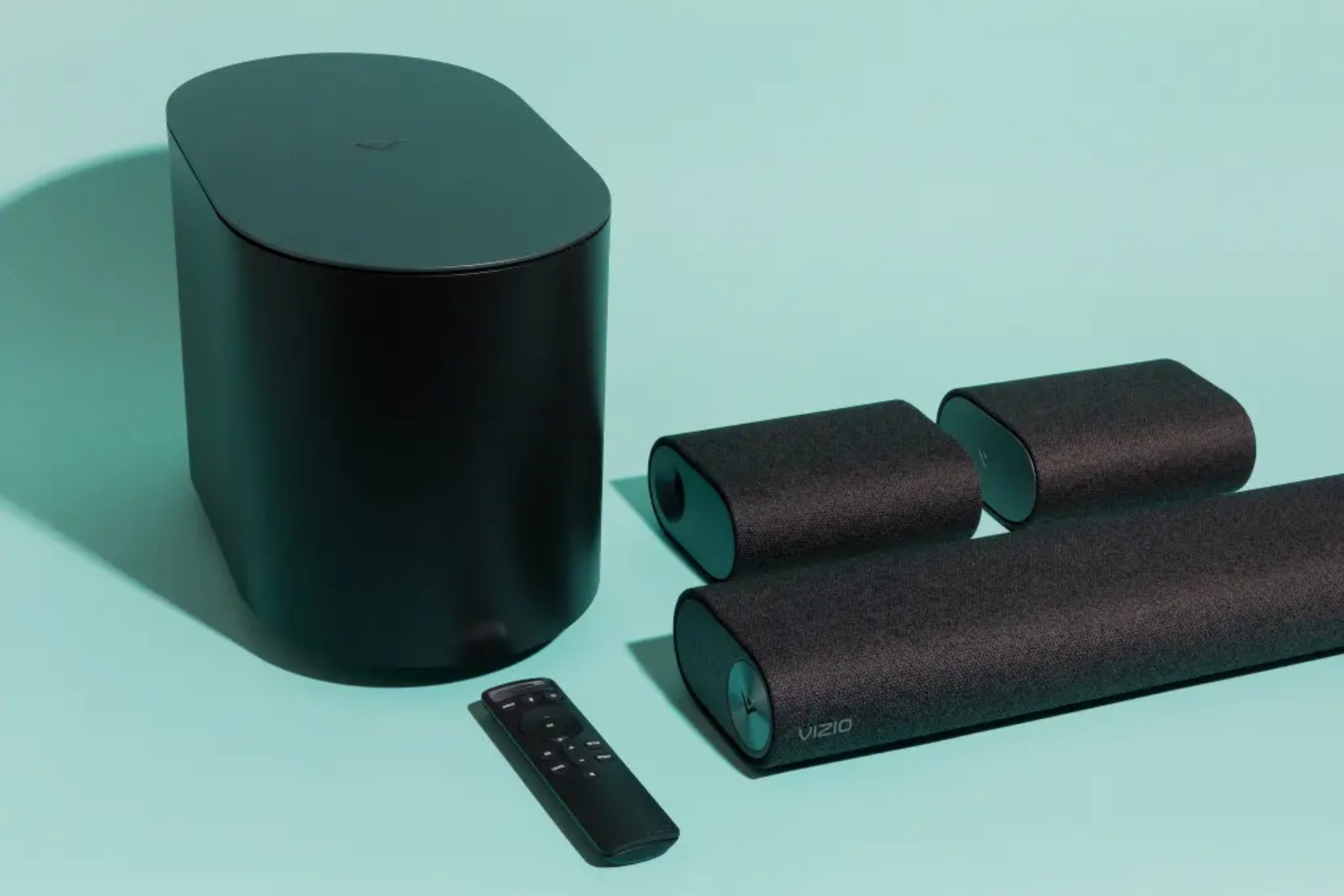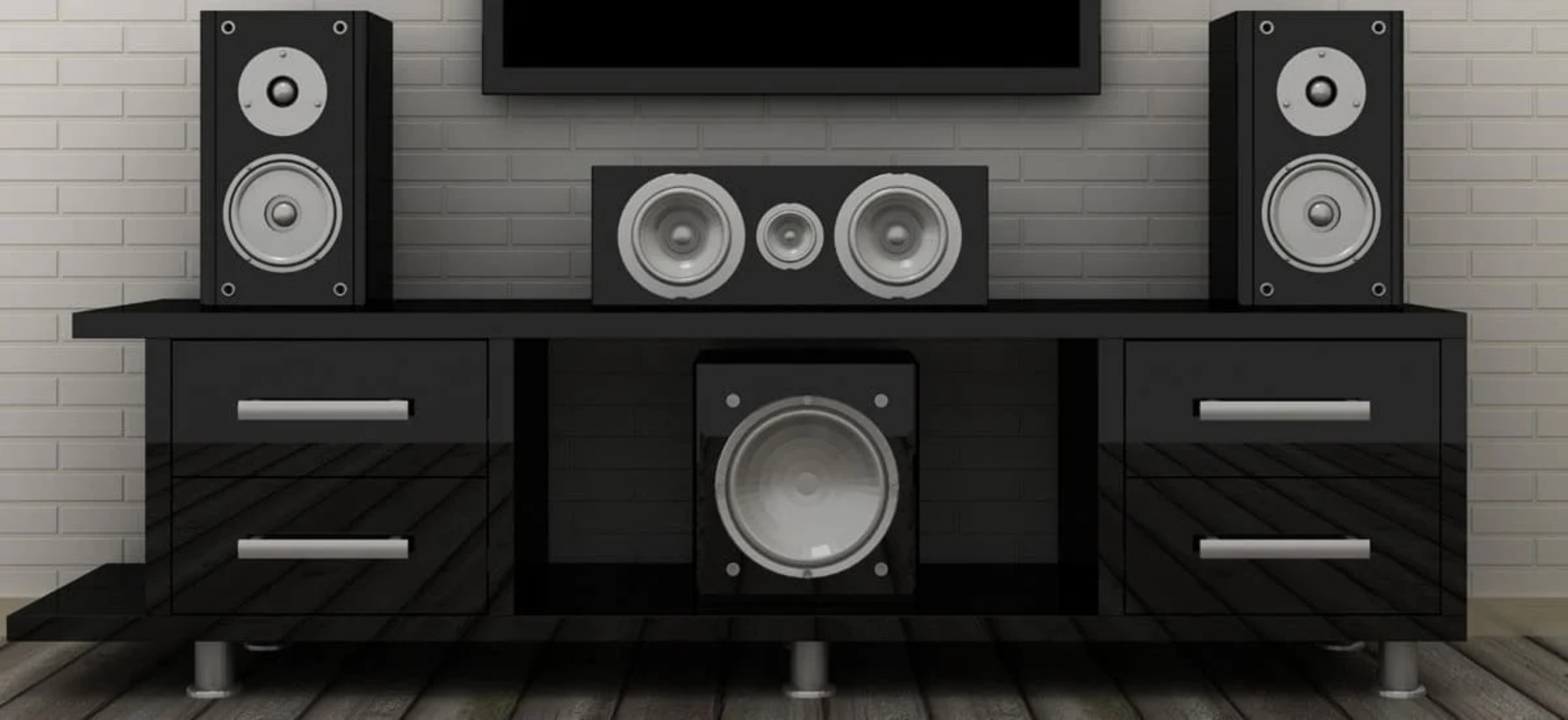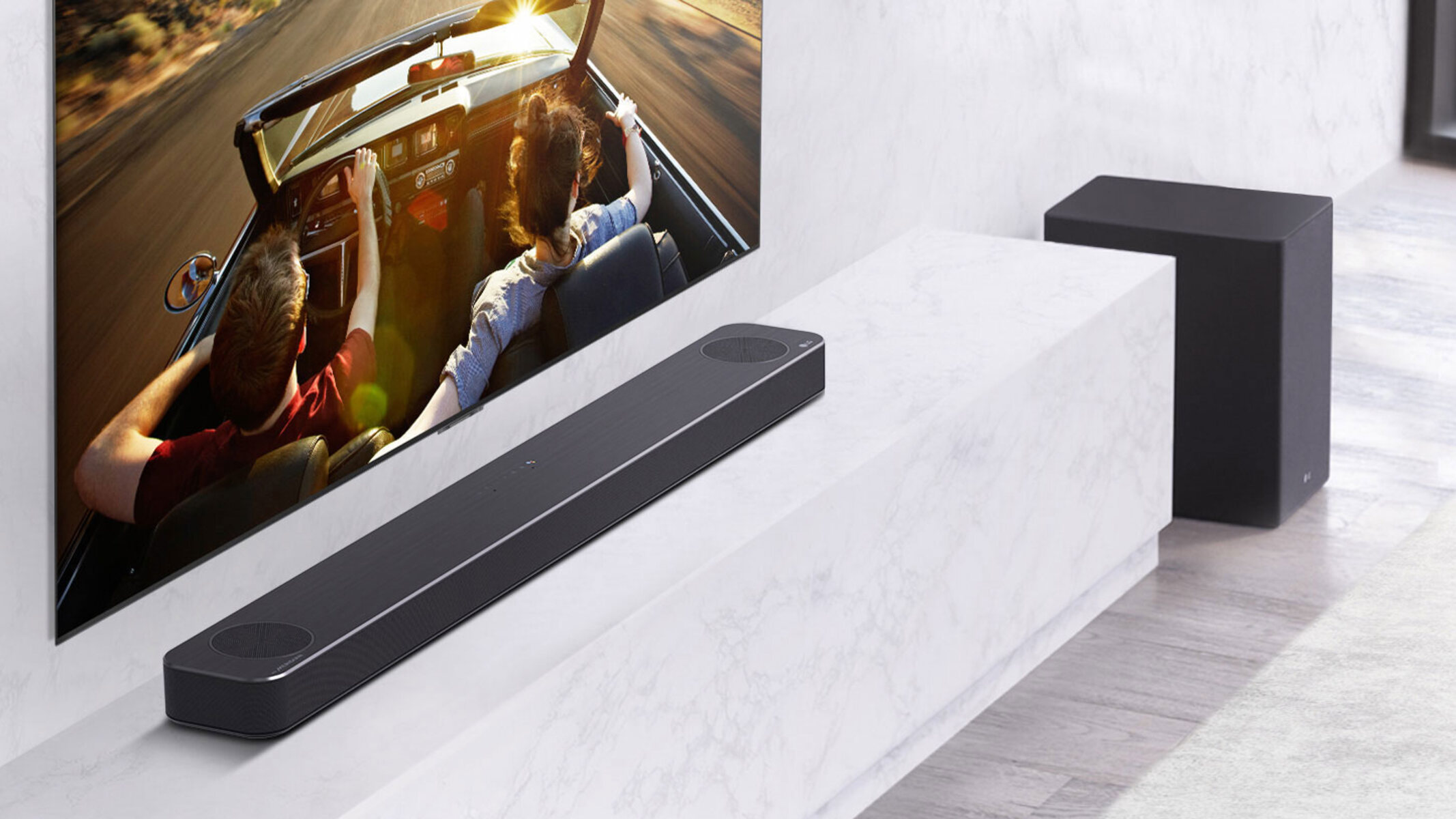Introduction
Welcome to the world of immersive audio! If you’re looking to elevate your home entertainment experience, pairing a JBL soundbar with a subwoofer is an excellent choice. A soundbar delivers crystal-clear audio for your favorite movies, TV shows, and music, while a subwoofer adds a powerful punch to your sound system by enhancing the low-frequency sounds.
In this guide, we will take you through the step-by-step process of pairing a JBL soundbar with a subwoofer. Whether you’re a tech-savvy enthusiast or a novice looking to set up your first audio system, we’ve got you covered.
Before we dive into the technicalities, let’s briefly understand what a JBL soundbar and subwoofer are and why they are a winning combination.
Understanding the JBL Soundbar and Subwoofer
A JBL soundbar is a sleek and compact speaker system that delivers high-quality audio. It is designed to be placed below or above your TV, providing an immersive sound experience without the need for multiple speakers cluttering your space. The soundbar reproduces a wide range of sound frequencies, ensuring you catch every dialogue, explosion, and musical note with exceptional clarity.
A subwoofer, on the other hand, specializes in handling bass frequencies, adding depth and richness to your audio. It produces those rumbling lows that make action scenes more dramatic and music more impactful. When combined with a soundbar, the subwoofer creates a dynamic audio landscape that truly envelops you in sound.
Now that we have a basic understanding of the components, let’s move on to the next section to determine if your soundbar and subwoofer are compatible.
Understanding the JBL Soundbar and Subwoofer
Before we delve into the process of pairing a JBL soundbar with a subwoofer, it’s essential to understand the individual components and their functionalities. By familiarizing yourself with the features of a JBL soundbar and subwoofer, you can make the most of your audio experience.
A JBL soundbar is a compact and stylish speaker system designed to enhance your home entertainment setup. It is specifically engineered to reproduce high-quality audio, ensuring that you hear every nuance of dialogue, music, and sound effects with remarkable clarity. The soundbar delivers a wide frequency range, from crisp highs to detailed mids, providing a well-rounded audio experience.
Additionally, JBL soundbars often come equipped with advanced technologies such as Dolby Atmos and surround sound capabilities. These features create a three-dimensional soundstage, immersing you in the action and making you feel like you’re part of the movie or concert.
On the other hand, a subwoofer is a specialized speaker designed to handle low-frequency sounds, primarily focused on delivering deep and powerful bass. It adds depth, impact, and richness to your audio, making explosions feel more realistic, music more engaging, and action sequences more exhilarating.
JBL subwoofers often employ innovative technologies like wireless connectivity and adjustable settings, allowing you to customize the bass according to your preferences and the acoustics of your room. By finding the perfect balance between the soundbar and subwoofer, you can create a harmonious audio setup that elevates your listening experience.
Understanding the role of each component is crucial when it comes to pairing a JBL soundbar with a subwoofer. These two devices work in tandem to create a well-balanced and immersive audio experience, ensuring that you don’t miss out on any details or rumbling bass lines.
Now that you have a clear understanding of the JBL soundbar and subwoofer, let’s move on to the next section to determine whether your devices are compatible for pairing.
Checking Compatibility
Before proceeding with the pairing process, it is essential to ensure that your JBL soundbar and subwoofer are compatible. While JBL products are designed to seamlessly work together, it’s always a good idea to double-check for compatibility to avoid any potential issues.
The first step in checking compatibility is to identify the model number of your JBL soundbar and subwoofer. This information can usually be found on the product’s packaging, user manual, or on the back or bottom of the devices themselves. Make a note of the model numbers as you will need them for the next step.
Next, visit the official JBL website or consult the respective user manuals to verify if your soundbar and subwoofer are designed to be paired together. JBL typically provides detailed product information and compatibility guides to assist users in setting up their audio systems.
If your soundbar and subwoofer are from the same JBL series, there is a higher chance that they are compatible and designed to work harmoniously together. However, it’s essential to verify this information to avoid any potential issues during the pairing process.
If you are unable to find the compatibility information on the website or in the user manuals, consider reaching out to JBL’s customer support for assistance. They will be able to provide you with the necessary information and guidance to ensure a successful pairing.
It’s also worth noting that some JBL soundbars and subwoofers connect wirelessly, while others may require a wired connection. Take note of the connectivity options supported by your devices and ensure that they are compatible with each other. For example, if your subwoofer only supports wireless connectivity, make sure your soundbar also has wireless capabilities to ensure a seamless connection.
By checking compatibility before starting the pairing process, you can avoid frustration and ensure a smooth setup. Once you have confirmed that your soundbar and subwoofer are compatible, you are ready to proceed with connecting the devices.
Connecting the Soundbar and Subwoofer
Now that you have verified the compatibility of your JBL soundbar and subwoofer, it’s time to connect the two devices. The method of connection may vary depending on the specific models you have, but here are some general steps to guide you through the process.
1. Position the soundbar and subwoofer: Determine the ideal placement for both the soundbar and subwoofer in your entertainment area. The soundbar is typically placed below or above the TV, while the subwoofer can be positioned anywhere in the room to achieve optimal bass response.
2. Power on the devices: Connect the power cords of both the soundbar and subwoofer to electrical outlets. Make sure the devices are powered on and ready to pair.
3. Establish a wired or wireless connection: Depending on the connectivity options available, you can establish a wired or wireless connection between the soundbar and subwoofer.
a. Wired connection: If your devices support a wired connection, use an audio cable (usually provided with the devices) to connect the subwoofer output on the soundbar to the input on the subwoofer. Ensure a secure and snug connection to prevent any audio interruptions.
b. Wireless connection: For devices that support wireless connectivity, follow the specific pairing instructions provided in the user manual. It usually involves pressing the pairing buttons on both the soundbar and subwoofer until they recognize and connect with each other wirelessly. Ensure that there are no obstructions between the devices and that they are within a reasonable range.
4. Test the connection: After establishing the connection, play some audio content to test the soundbar and subwoofer. Ensure that the sound is coming from both devices and that the subwoofer is delivering the desired bass response. Adjust the volume levels and bass settings to your preference.
5. Fine-tune the audio settings: Some JBL soundbars come with dedicated audio modes or EQ settings that allow you to optimize the sound to suit your listening preferences. Explore these settings and make adjustments accordingly to enhance your audio experience.
By following these steps, you can successfully connect your JBL soundbar and subwoofer. Remember to consult the user manuals for your specific models to ensure that you are following any device-specific instructions provided by JBL.
Adjusting the Sound Settings
Once you have successfully connected your JBL soundbar and subwoofer, it’s time to fine-tune the sound settings to optimize your audio experience. Adjusting the sound settings allows you to customize the output according to your preferences and the specific content you’re watching or listening to.
1. Volume control: Start by adjusting the overall volume of the soundbar and subwoofer. Ensure that the volume levels are balanced, and you can clearly hear the audio without it being too overpowering.
2. Bass and treble adjustments: Most JBL soundbars offer the ability to adjust the bass and treble levels. If you prefer a stronger bass response, increase the bass level. Conversely, if you want more emphasis on high-frequency details, adjust the treble settings accordingly.
3. Sound modes: Many JBL soundbars come with different sound modes, such as Movie, Music, Sports, or Game modes. Each mode is optimized to enhance specific types of content. Experiment with these modes to find the one that best suits your preferences and the type of media you’re consuming.
4. Surround sound settings: If your JBL soundbar supports surround sound, explore the settings that control the virtual surround effect. This feature creates a more immersive listening experience by simulating a multi-channel speaker setup. Adjust the surround sound settings to your liking, ensuring that it adds depth and spatial awareness to your audio without overpowering the dialogue or main sound elements.
5. Dialog enhancement: Some JBL soundbars offer dialog enhancement features, designed to boost the clarity and volume of voices and dialogue. If you find that dialogues are often unclear or too quiet, enable this feature to improve the intelligibility of spoken words.
6. Auto-calibration: To simplify the sound adjustment process, certain JBL soundbars come equipped with auto-calibration features. These features analyze the room’s acoustics and automatically optimize the sound settings to deliver the best audio performance. If your soundbar has this feature, follow the instructions provided in the user manual to activate it.
7. Room placement: Keep in mind that the placement of your soundbar and subwoofer within the room can affect the audio performance. Experiment with the positioning of the devices to achieve the best soundstage and bass response. Avoid placing the subwoofer in corners or against walls, as this can result in excessive bass buildup or distortion.
By adjusting the sound settings to your liking, you can create a customized audio experience that enhances your enjoyment of movies, TV shows, music, or gaming.
Troubleshooting Common Issues
While setting up and using your JBL soundbar and subwoofer combination, you might encounter some common issues. Here are a few troubleshooting tips to help you resolve these problems and ensure optimal performance:
1. No sound or distorted sound: If you’re not hearing any sound or experiencing distortion, check the connections between the soundbar and subwoofer. Ensure that all cables are securely plugged in. If using a wireless connection, verify that both devices are paired correctly. Try adjusting the volume levels and sound settings on both the soundbar and subwoofer.
2. Missing subwoofer sound: If you can’t hear any bass from the subwoofer, make sure the subwoofer is powered on and connected properly. Adjust the bass settings on your soundbar and ensure that the soundbar recognizes the subwoofer. You may also need to check the placement of the subwoofer and ensure it’s not blocked by obstacles or placed too far away from the soundbar.
3. Audio sync issues: If there’s a noticeable delay between the audio and video, check if your soundbar has an audio sync adjustment feature. This setting allows you to manually adjust the delay to align the sound with the video. Experiment with different delay settings until you find the perfect synchronization.
4. Connectivity problems: If you’re using a wireless connection between the soundbar and subwoofer and experiencing connectivity issues, try re-pairing the devices. Power off both the soundbar and subwoofer, then power them on again and initiate the pairing process as per the user manual instructions. Ensure that there are no obstacles or interference between the devices that could disrupt the wireless signal.
5. Remote control issues: If the remote control isn’t functioning properly, replace the batteries or ensure they are properly inserted. Check for any obstacles that may interfere with the remote’s signal, such as objects blocking the line of sight between the remote and the soundbar. Also, check for any infrared interference from other devices in the vicinity.
6. Firmware updates: To ensure optimal performance and access to new features, periodically check for firmware updates for your soundbar and subwoofer. Visit the JBL website or refer to the user manual for instructions on how to update the firmware. Most updates can be done through a USB connection or through the JBL mobile app, if available.
If you encounter persistent issues that you’re unable to resolve, it’s recommended to consult the user manual or contact JBL customer support for further assistance. They can provide specific troubleshooting steps based on your model and help resolve any technical difficulties you may be facing.
Conclusion
Pairing a JBL soundbar with a subwoofer can significantly enhance your home entertainment experience. The combination of a high-quality soundbar and a powerful subwoofer creates a dynamic audio setup that immerses you in rich, detailed sound.
In this guide, we learned about the JBL soundbar and subwoofer, understanding their individual functionalities and how they complement each other. We explored the importance of checking compatibility and ensuring that your devices are designed to work together seamlessly.
We then discussed the process of connecting the soundbar and subwoofer, highlighting the options of both wired and wireless connections. By following the provided steps and consulting the user manuals, you can successfully establish a connection between your JBL soundbar and subwoofer.
Once connected, we addressed the vital task of adjusting the sound settings to optimize your audio experience. With the ability to control volume, adjust bass and treble levels, explore different sound modes, and fine-tune surround sound settings, you can personalize your audio to suit your preferences.
Finally, we covered some common troubleshooting tips to help resolve any issues you may encounter during setup or usage. By following these troubleshooting steps or seeking assistance from JBL’s customer support, you can overcome technical difficulties and ensure that your JBL soundbar and subwoofer operate flawlessly.
Remember, setting up a JBL soundbar with a subwoofer is all about creating the perfect audio environment for your entertainment needs. Take your time to experiment with the settings, position the devices optimally, and enjoy the immersive audio experience they deliver.
Now that you have a solid understanding of the process, go ahead and elevate your home audio setup with a JBL soundbar and subwoofer combination. Sit back, relax, and immerse yourself in the incredible sound quality that JBL is known for.







